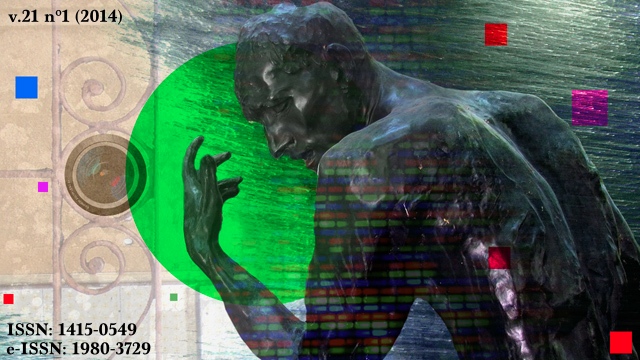The staging of the gaze in the cinema of Nouvelle Vague
DOI:
https://doi.org/10.15448/1980-3729.2014.1.14356Keywords:
Enunciation, cinema, Nouvelle VagueAbstract
In the mid-50s classic American cinema went into crisis, while in France appeared the Nouvelle Vague film movement led by young directors and former critics of Cahiers du Cinéma. Names like Godard and François Truffaut promoted the so-called “policy of authors”, who advocated the inclusion of film director in the pantheon of individual-artists, like painters and writers. This paper addresses the veiled discourse defense of this policy through the films of the Nouvelle Vague, which articulated the presence of its director as an artist behind the work. This speech was defended by the gaze turned to the camera, a gaze which questions and challenges the viewer. Our goal is to investigate the discursive practices that showed this trend in French cinema of the time to reassert itself as art and as a product of the individualism of someone who could be called, as it occurred in the other arts, the “author”.
Downloads
References
AUMONT, Jacques et al. A estética do filme. Campinas: Papirus, 1995.
BENVENISTE, Émile (1966). A Natureza dos pronomes. In: ______. Problemas de linguística geral 1. Campinas: Pontes, 1995.
CASETTI, Francesco. Inside the Gaze: The Film and Its Spectator. Bloomington-Indianapolis: Indiana University Press, 1991.
CINTRA, Ismael Ângelo. Marcas linguísticas do narrador. Revista Alfa, São Paulo,v. 25, p. 49-56, 1981.
CHARAUDEAU, Patrick; MAINGUENEAU, Dominique. Dicionário de análise do discurso. São Paulo: Contexto, 2008.
DIXON, Wheeler Winston. It looks at you: the returned gaze of cinema. Nova York: Sunny Press, 1994.
GARDIES, René. Compreende le cinema et les images. Lisboa, Portugal, 2006. Disponível em: http://www.olivreiro.com.br/pdf/livros/cultura/2661452.pdf. Acesso em: 21 ago. 2011.
GAUDREAULT, André; JOST, François. Enunciation and narration: a Companion to Film Theory, 1999. Disponível em: http://www.film.uzh.ch/download/lehrveranstaltungen/filmtheorie/Enunciation.pdf. Acesso em: 21 ago. 2011.
METZ, Christian. Linguagem e cinema. São Paulo: Perspectiva, 1971.
______. A significação no cinema. São Paulo: Perspectiva, 1972.
______. The Impersonal Enunciation, or the Site of Film (in the margin of recent work of enunciation in cinema. New Literary History, The Johns Hopkins University Press, v. 22, p. 747–772, 1991.
VERNET, Marc. The look at the camera. In: Cinema Journal. Texas, 1989. Disponível em: http://www.jstor. org/pss/1225117. Acesso em: 21 ago. 2011.
Downloads
Published
How to Cite
Issue
Section
License
Copyright
The submission of originals to Revista Famecos implies the transfer by the authors of the right for publication. Authors retain copyright and grant the journal right of first publication. If the authors wish to include the same data into another publication, they must cite Revista Famecos as the site of original publication.
Creative Commons License
Except where otherwise specified, material published in this journal is licensed under a Creative Commons Attribution 4.0 International license, which allows unrestricted use, distribution and reproduction in any medium, provided the original publication is correctly cited.






